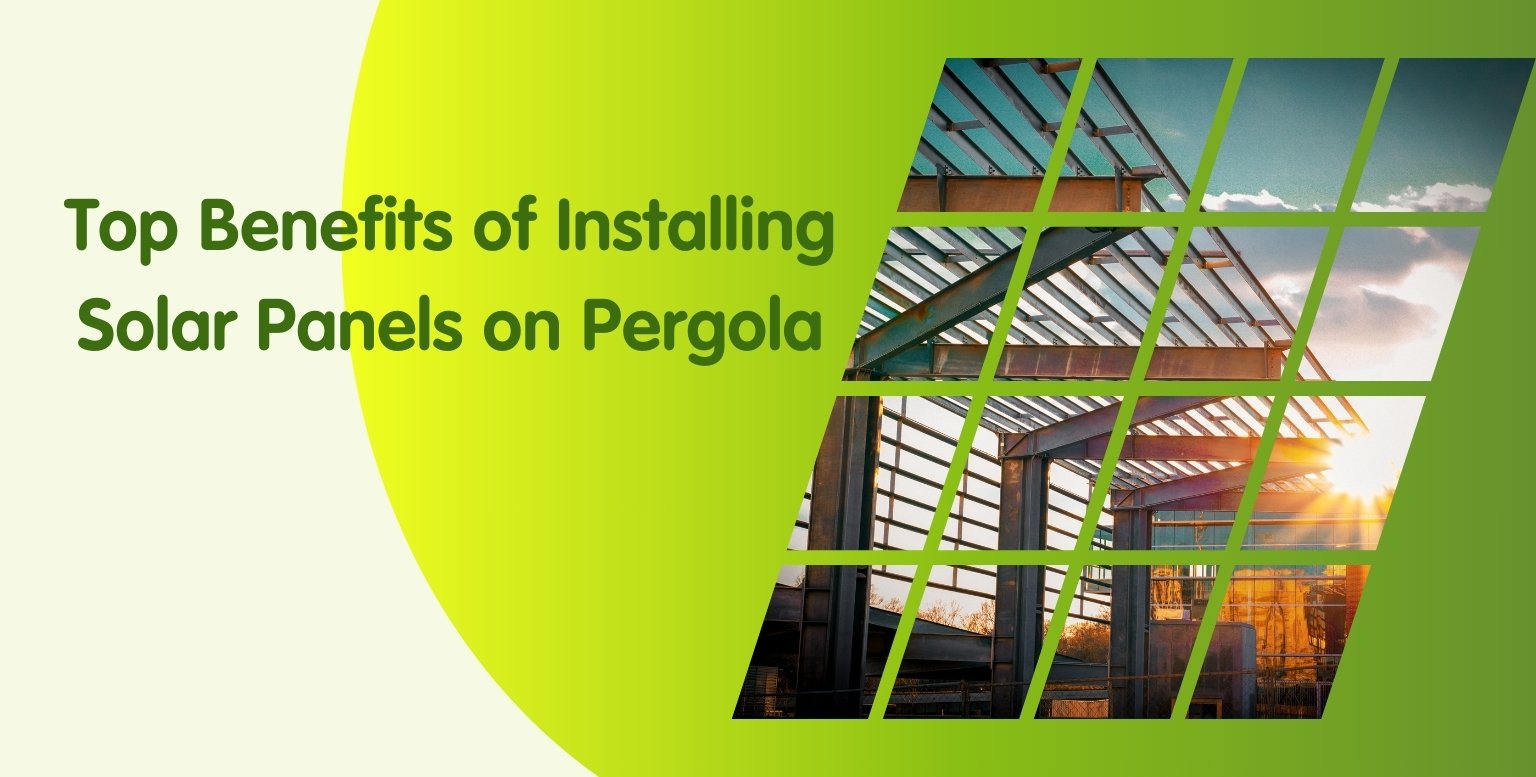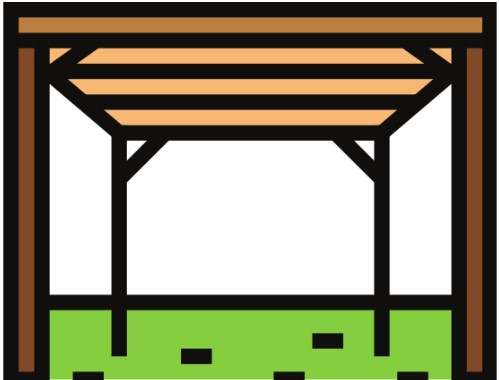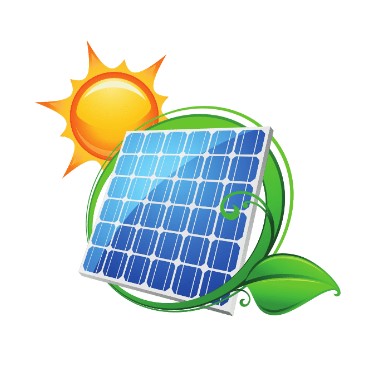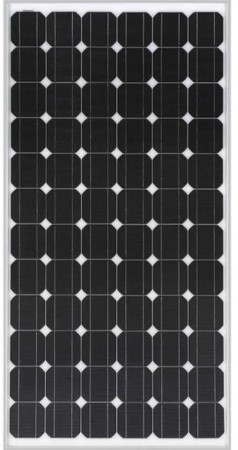Your basket is currently empty!
Written by
Pergola Solar Panels Installation Costs & Benefits

Find out how this setup can save you money, enhance your outdoor space, and contribute to sustainability with solar panels on a pergola.
This guide covers benefits, installation tips, costs and more.
Key Takeaways
- Solar panel pergolas provide dual benefits of shade and renewable energy generation, enhancing both functionality and aesthetics in outdoor spaces.
- Installing solar panels on pergolas can lead to significant energy savings and promote environmental sustainability by reducing electricity costs and carbon emissions.
- Various types of solar panels are available for pergolas, with considerations including efficiency, cost, and aesthetics, making it important to choose the right option for each installation.
What is a Solar Panel Pergola?
A solar panel pergola is an innovative outdoor structure designed to offer shade while simultaneously harnessing solar energy.

These pergolas incorporate solar panels into their design, allowing homeowners to generate electricity from sunlight while enjoying the comfort and aesthetics of a shaded area.
Unlike conventional solar panels mounted on rooftops, solar panel pergolas serve a dual purpose, providing both a functional and eco-friendly solution for outdoor spaces.
Integrating a solar energy system into your pergola allows you to harness renewable energy while maintaining the beauty and functionality of your garden structure.
Similar to conservatory solar panels, pergolas are becoming increasingly popular to add them to as a way to maximise energy efficiency and sustainability in outdoor areas.
How Solar Panels on Pergolas Work
Solar panels on pergolas work by incorporating photovoltaic cells that capture sunlight and convert it into direct current (DC) electricity.
This electricity is then converted into alternating current (AC) by an inverter, making it usable for household appliances and other electrical needs.
A solar power system enhances the efficiency of this process.
To achieve maximum efficiency, solar panels should be oriented south and tilted between 20° and 50°, based on geographic location and the sun’s trajectory.
A well-positioned solar pergola can produce between one and three kilowatts of electricity, covering a significant portion of a household’s energy needs.
A 12×12 ft pergola with 2400W solar panels, for instance, can produce around 9.6kWh of electricity daily.
This makes solar pergolas a practical solution for harnessing solar power while enhancing outdoor living spaces.
Benefits of Solar Panels on Pergolas

The benefits of solar panels on pergolas are manifold, making them a worthwhile investment for both residential and commercial properties.
Not only do they generate renewable energy, which helps reduce electricity costs, but they also provide a sustainable and eco-friendly solution for power generation.
Additionally, solar panel pergolas can enhance the aesthetics of outdoor living spaces, combining modern design elements with functionality.
Installing solar panels on your pergola brings significant energy savings, enhances environmental sustainability, and boosts the visual appeal of your garden or patio.
The following subsections explore these benefits in detail.
Energy Savings
Solar panels on pergolas generate free renewable energy, significantly lowering electricity costs for homeowners.
The amount of electricity generated depends on various factors such as panel size and sunlight exposure, with each panel capable of producing between 250 to 400 watts per hour.
Over time, the installation of solar panels can result in significant cost savings, with annual savings on electricity bills ranging from £270 to £300.
An average household can see yearly savings of up to £1,190.
Reducing reliance on the grid, solar pergolas enhance energy independence, offering a sustainable solution for solar energy systems in the future.
Eco-Friendly Solution
One of the most compelling reasons to install solar panels on a pergola is the positive environmental impact.
Solar pergolas can significantly reduce carbon emissions by generating clean, renewable energy.
In commercial applications, they not only lower energy costs but also contribute to environmental responsibility by promoting sustainable practices.
Adopting solar pergolas helps businesses and homeowners showcase their commitment to sustainability, reducing carbon footprints and promoting renewable energy.
Aesthetic Enhancement
Solar panels on pergolas can greatly enhance the visual appeal of outdoor areas.
By integrating modern design elements, solar pergolas provide a contemporary and environmentally friendly appearance for homes, businesses, and schools, especially when solar panels installed are part of the design.
Compared to traditional shading methods, solar pergolas offer a sleek and attractive solution that blends seamlessly with various architectural styles.
This combination of functionality and aesthetics makes solar panel pergolas an excellent choice for those looking to enhance the beauty and utility of their outdoor spaces.
Solar Panels for Pergolas
When it comes to installing solar panels on a pergola, there are several types to choose from, each with its own set of advantages and considerations.
The primary categories are monocrystalline and polycrystalline solar panels.
Additionally, there are thin-film solar panels as well. Factors such as efficiency, cost, and visual appeal play a crucial role in deciding the right solar panels for your pergola.
Typically, an average pergola can accommodate between three to five solar panels, depending on the size of the pergola roof.
Let’s explore these different types of solar panels for pergolas in more detail.
Monocrystalline Solar Panels

Monocrystalline solar panels are made from single crystal silicon cells, known for their high efficiency and sleek black appearance.
These panels perform well in low-light conditions, making them suitable for various environments.
However, they are generally more expensive than other types of solar panels, which is a factor to consider when planning your solar panel installation.
Homeowners often choose monocrystalline panels for their aesthetic appeal and superior performance, despite the higher cost.
Polycrystalline Solar Panels
Polycrystalline solar panels are characterised by their blue color and are a cost-effective option for budget-conscious installations.
While they have slightly lower efficiencies compared to monocrystalline panels, they are still a popular choice due to their affordability.
However, they are less visually appealing, which might be a consideration for homeowners looking to enhance the aesthetics of their outdoor spaces.
Thin-Film Solar Panels
Thin-film solar panels consist of layers of photovoltaic materials applied to substrates like glass, plastic, or metal, making them versatile for various design implementations.
They are the most lightweight and flexible option available for solar installation on pergolas, which can be an advantage if there are weight restrictions on the structure.
However, thin-film panels have the lowest efficiency and shortest lifespan compared to monocrystalline and polycrystalline panels. Homeowners might choose thin-film panels for less noticeable installations or when specific design considerations are required.
Solar roof tiles
Solar roof tiles are a relatively newer concept that is basically exactly what they say they are – roof tiles with solar built into them. They are essentially lots of smaller solar panels. Unfortunately, as you can expect, these do cost a lot more, but they would make great solar panels for a pergola in terms of size.
Installation Process and Considerations
Installing solar panels on a pergola involves several important considerations, from ensuring the structural integrity of the pergola to positioning the panels for maximum efficiency. The installation process can vary depending on whether you opt for a professional installation or a DIY approach.
Considering these factors ensures a successful solar panel installation, maximising energy production and longevity. These considerations are discussed in more detail below.
Structural Integrity
Before installing solar panels on a pergola, it is vital to inspect the stability and load-bearing capacity of the pergola’s structure.
If the pergola is not strong enough to support the weight of the solar panels, reinforcement may be necessary, or consulting with a structural engineer could be beneficial.
Solar panels need to be securely mounted to withstand various weather conditions, ensuring both safety and effectiveness. Proper installation is crucial for effective solar panel performance on a pergola.
Positioning and Orientation
The positioning and orientation of solar panels are critical factors that affect their efficiency.
Ideally, solar panels should face south and be installed at an angle between 20° and 50° to maximise sunlight exposure.
Shading and sunlight availability must also be considered, as these can significantly impact the performance of the solar panels.
If the existing pergola’s roof angle is inadequate, mounts can be used to achieve the optimal orientation.
Professional vs. DIY Installation
When it comes to installing solar panels on a pergola, homeowners can choose between professional installation and DIY methods.
Hiring professionals ensures that the solar panel system meets local regulations and optimises energy production.
DIY installation might save costs but risks compromising the system’s stability and efficiency.
Weighing the pros and cons of professional versus DIY installation can help homeowners make an informed decision based on their needs and capabilities.
Cost and Financial Incentives
The cost of installing solar panels on a pergola can vary widely, but the potential financial incentives and long-term savings make it a worthwhile investment.
Factors to consider include the initial installation costs, available government grants and schemes, and the potential to sell excess solar energy back to the supplier.
Understanding these financial aspects can help homeowners make an informed decision about investing in solar panel pergolas.
Let’s break down these costs and incentives in more detail.
Installation Costs
The cost range for installing solar panel pergolas typically falls between £2,108 and £11,513, with standard models starting at around £1,500, excluding the solar panels themselves.
The average cost per solar panel for installation on a pergola is between £350 and £500, with the total cost for adding panels generally ranging from £2,108 to £3,513.
Factors affecting the overall costs include the size of the solar system, sunlight exposure, and any additional features or reinforcements required for the pergola.
Government Incentives and Tax Credits
In the U.S., homeowners can benefit from a federal tax credit that covers up to 30% of the total cost of installing solar panel pergolas.
This federal solar tax credit applies to primary and secondary residences and includes the cost of the panels, equipment, and installation.
Additionally, grants and other government schemes may be available to fund the installation of solar panels on existing pergolas, providing further financial support.
Long-Term Savings
Installing solar panels on a pergola can result in significant long-term savings by reducing electricity bills.
On average, solar panels can reduce electricity costs by approximately £6 per panel.
Over time, these savings can accumulate, providing a sustainable way to generate renewable energy while enhancing the utility and aesthetics of outdoor spaces.
The long-term financial benefits of solar pergolas make them an attractive investment for homeowners looking to reduce their energy costs.
Summary
In summary, installing solar panels on pergolas offers numerous benefits, including energy savings, environmental sustainability, and aesthetic enhancement.
By harnessing solar power, homeowners and businesses can reduce electricity costs, decrease carbon emissions, and create visually appealing outdoor spaces.
Various types of solar panels are available for pergolas, each with its own advantages and considerations. The installation process involves ensuring structural integrity, optimal positioning, and choosing between professional and DIY methods.
Financial incentives and long-term savings further make solar panel pergolas a smart investment.
By following maintenance tips and looking at real-life examples, you can successfully implement this innovative solution in your own property.
Embrace the future of energy efficiency and sustainability with solar panel pergolas.
Frequently Asked Questions
What is a solar panel pergola?
A solar panel pergola is a dual-purpose outdoor structure that offers shade while simultaneously generating renewable energy through integrated solar panels.
This innovative design enhances your outdoor space and contributes to sustainability.
How do solar panels on pergolas work?
Solar panels on pergolas function by utilising photovoltaic cells to transform sunlight into electricity, providing power for household appliances or storage for future use.
This integration not only enhances energy efficiency but also adds value to outdoor spaces.
What are the benefits of installing solar panels on a pergola?
Installing solar panels on a pergola provides energy savings and reduces carbon emissions while enhancing outdoor aesthetics and potentially increasing property value.
This integration not only maximises space but also promotes sustainable living.
What types of solar panels are suitable for pergolas?
Monocrystalline, polycrystalline, and thin-film solar panels are all suitable for pergolas, allowing you to choose based on your specific needs and preferences.
Consider factors like efficiency, space, and budget when making your selection.
Are there any financial incentives for installing solar panels on pergolas?
Installing solar panels on pergolas can provide financial incentives, including government grants and tax credits, that can substantially lower installation costs.
It’s a beneficial investment for both the environment and your finances.
Written by
Start Your Solar Project Today
Best Solar Panel & Battery Storage Installation Deals
We price match too!





